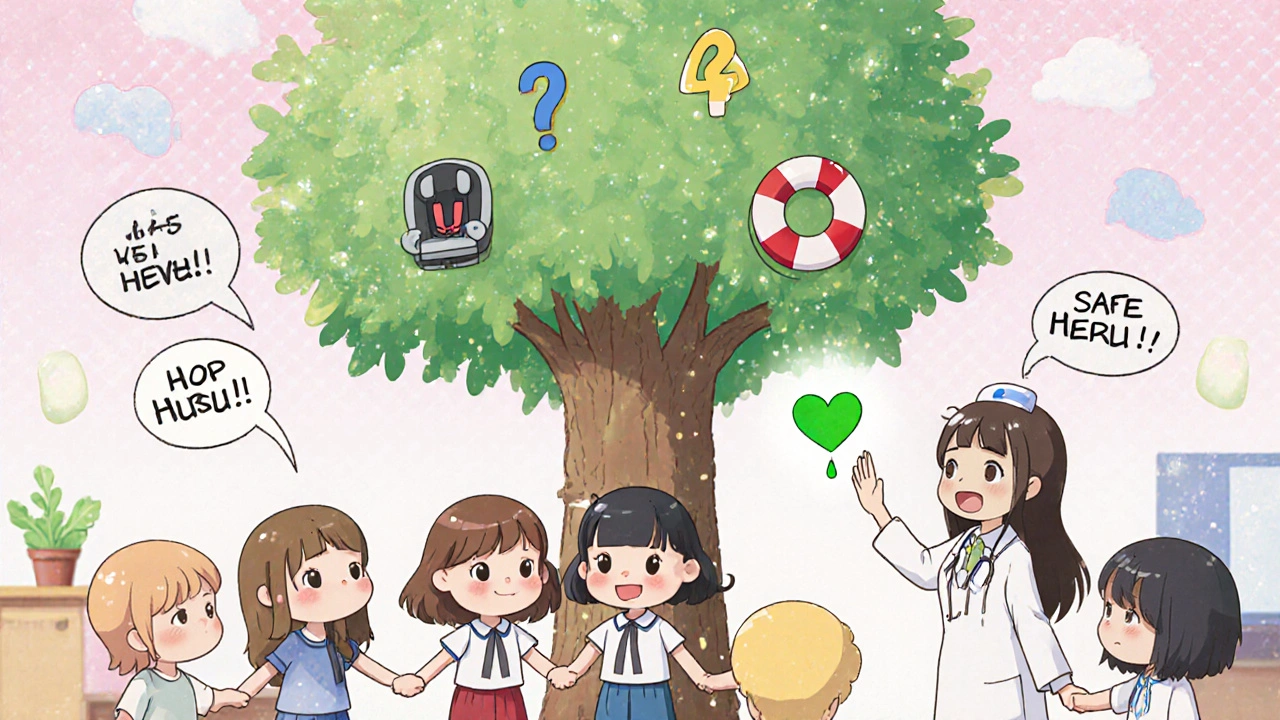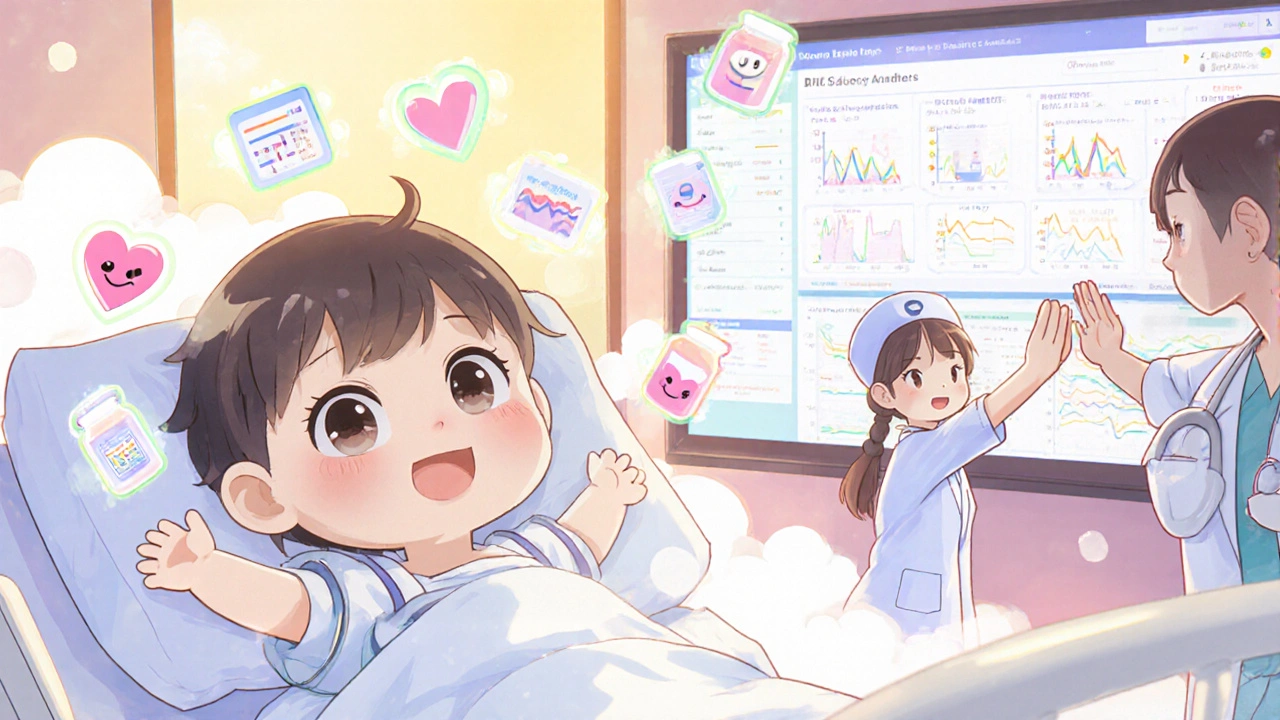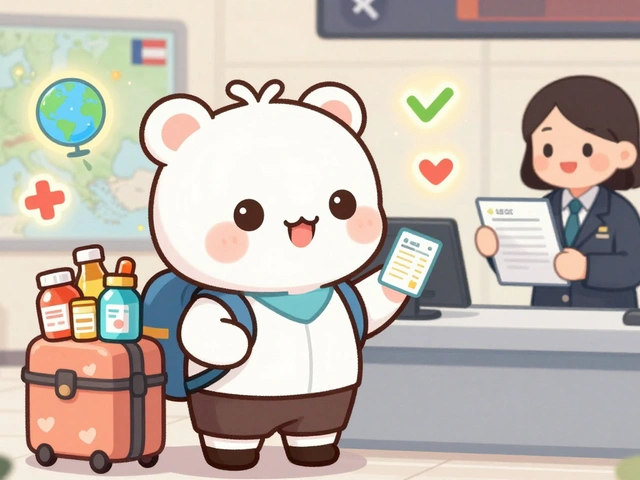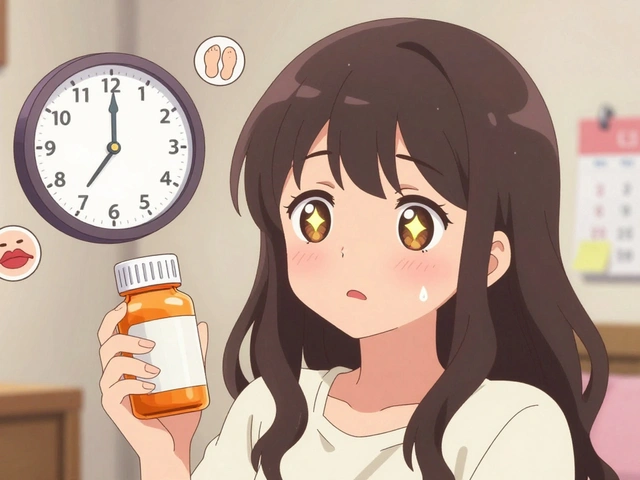Rare Side Effect Detection Calculator
Side Effect Detection Calculator
See how pooling data from multiple hospitals improves the detection of rare side effects in children.
Enter your parameters and click Calculate to see the probability of detecting rare adverse events.
When a child is given a new medication or enters a critical care unit, doctors don’t just guess whether it’s safe. They rely on networks of hospitals, researchers, and data systems working together to catch side effects before they become widespread. These are the pediatric safety networks-structured, multi-institutional collaborations designed to find hidden risks in treatments that would otherwise go unnoticed in single hospitals or small studies.
Why does this matter? Because children aren’t small adults. Their bodies process drugs differently. A dose that’s safe for a teenager might cause seizures in a two-year-old. And because kids are often excluded from early drug trials, we’ve spent decades guessing at safety. Pediatric safety networks fix that gap by pooling real-world data across dozens of hospitals, tracking side effects as they happen, and adapting care in real time.
How These Networks Actually Work
The most well-documented example is the Collaborative Pediatric Critical Care Research Network (CPCCRN), launched by the Eunice Kennedy Shriver National Institute of Child Health and Human Development (NICHD) in 2014. It wasn’t just another research project. It was a machine: seven children’s hospitals, one central data hub, and a strict governance system that forced collaboration.
Each hospital had to follow the same protocols. The same data forms. The same definitions for what counted as a side effect. That standardization is what made the network powerful. If one hospital saw three kids develop liver enzyme spikes after a new antibiotic, but the others saw none, that was noise. If five out of seven saw it? That was a signal.
The Data Coordinating Center (DCC) was the brain. It didn’t just collect data-it designed the studies, calculated how many kids you needed to enroll to detect rare side effects, and built tools to flag unusual patterns. One PI from a participating hospital said the DCC’s sample size calculations saved their study from failing. Without it, they might have enrolled 50 kids and missed a side effect that only happened in 1 in 200 patients.
Every network had a Data and Safety Monitoring Board (DSMB). This wasn’t a formality. It was a team of independent experts who met monthly to review all adverse events. If a pattern emerged-like increased seizures after a specific sedative-they could pause the trial, warn other sites, and change the protocol before more kids were harmed.
More Than Drugs: Safety Beyond the ICU
Not all pediatric safety networks focus on medications. The Child Safety Collaborative Innovation and Improvement Network (CoIIN), run by the Children’s Safety Network with HRSA support, looked at injuries and prevention. Think car seats, drowning risks, teen dating violence, and firearm safety.
One state team in CoIIN was running a program to reduce sexual violence among teens using peer-led workshops. They tracked participation and reported outcomes. But when they analyzed the data, they found something unexpected: kids who attended the sessions were more likely to report dating violence-not less. That wasn’t the goal. So they dug deeper. Turns out, the way they framed the questions in surveys made kids feel more comfortable disclosing abuse. The intervention itself wasn’t causing harm-it was uncovering hidden problems.
That’s the power of these networks. They don’t just track side effects from pills. They catch unintended consequences from policies, programs, and even well-meaning interventions. And because they use real-time data tools, they can adjust on the fly. One team changed their “Green Dot” prevention sessions to include more direct talk about dating violence after seeing the data. Within six months, disclosure rates went up, and reported incidents dropped.

Why Traditional Studies Fail Kids
Randomized controlled trials-the gold standard in medicine-don’t work well for children. You can’t ethically give a placebo to a child in ICU. You can’t recruit thousands of toddlers for a drug trial when the condition affects only 1 in 10,000. And even if you could, the results might not reflect real-world use.
Pediatric safety networks solve this by working with what’s already happening. Instead of creating artificial conditions, they observe what’s going on in busy ERs, ICUs, and community clinics. They use what’s called “practice-based research”-learning from daily care, not lab experiments.
A 2013 study in Academic Pediatrics called these networks “the only viable way” to study safety in rare pediatric conditions. They’re not perfect, but they’re the best tool we have. And they’ve already changed guidelines. For example, CPCCRN data led to revised sedation protocols in pediatric ICUs after it showed that a commonly used drug combination increased the risk of prolonged breathing problems in kids under three.
What Makes These Networks Different From Regular Research
Most clinical studies are top-down. A university designs a trial, gets funding, recruits patients, and publishes results years later. Pediatric safety networks are bottom-up. Frontline nurses and doctors help design the questions. Data flows in real time. Changes happen within months, not years.
Here’s how:
- Standardized tools: Every site uses the same forms, definitions, and data fields. No more confusion over what counts as “low blood pressure” or “allergic reaction.”
- Centralized analysis: A single team runs all the stats. That means small sites get the same analytical power as big academic centers.
- Fast feedback loops: If a side effect pops up in Alabama, doctors in Ohio know within days. They can adjust their practice immediately.
- Shared governance: Decisions aren’t made by one university. They’re voted on by a steering committee with reps from every site. That builds trust and buy-in.
This isn’t just efficient. It’s ethical. When you’re dealing with kids who can’t consent for themselves, you owe them the fastest possible path to safer care. These networks deliver that.

The Hidden Costs and Challenges
These networks aren’t magic. They require serious commitment. Hospitals had to assign staff full-time just to manage data entry. Nurses spent extra hours filling out forms. IT teams had to build secure connections that met HIPAA rules. One CoIIN team reported spending 15 to 20 hours a month just on data collection during peak phases.
And funding? It’s always temporary. CPCCRN’s original grant expired in 2014. CoIIN ran two cohorts, ended in 2019, and hasn’t been re-funded since. That’s the biggest threat: these networks only exist as long as the grants do.
But here’s the twist: even after funding ended, the systems didn’t vanish. Many hospitals kept using the data tools and protocols. Some states kept running their safety teams. The infrastructure became part of their routine. That’s the real legacy-not the grant, but the culture change.
What’s Next for Pediatric Safety?
The next generation of these networks is already here. The Pediatric Trials Network, funded by NICHD under new UG3/UH3 mechanisms, is building on CPCCRN’s model but with more focus on long-term outcomes. They’re connecting hospital data systems to electronic health records across states. Imagine a child who gets a new asthma drug in Chicago, then moves to Atlanta. Their side effect history follows them-not in a paper chart, but in a secure, linked database.
That’s the future: seamless, nationwide safety monitoring. No more silos. No more guessing. Just real-time alerts when something goes wrong.
And it’s not just about drugs anymore. It’s about vaccines, medical devices, behavioral therapies, even school-based health programs. Every intervention that touches a child should be watched. Not because we’re paranoid-but because we’ve learned too many times that what seems safe on paper can be dangerous in practice.
Pediatric safety networks are the quiet heroes of child health. They don’t make headlines. But every time a child avoids a bad reaction, it’s because someone in one of these networks saw the pattern, spoke up, and changed the game.
What is the main purpose of pediatric safety networks?
The main purpose is to detect and track side effects and adverse events in children by pooling data across multiple hospitals and clinics. These networks allow researchers to find rare or delayed reactions that single institutions would miss, leading to faster updates in treatment guidelines and safer care for kids.
How do pediatric safety networks differ from regular clinical trials?
Regular clinical trials are tightly controlled experiments, often done in labs or select hospitals with strict inclusion criteria. Pediatric safety networks observe real-world care across many sites, using everyday practices to find side effects as they naturally occur. They’re faster, more flexible, and better suited for studying rare conditions or vulnerable populations like critically ill children.
Do these networks only track drug side effects?
No. While some networks focus on medications, others track injury prevention, behavioral interventions, and even policy impacts. For example, the Child Safety CoIIN looked at things like car seat use, drowning risks, and teen dating violence programs-catching unintended consequences like increased reporting of abuse due to better survey methods.
Are pediatric safety networks still active today?
The original CPCCRN and CoIIN programs ended after their grant cycles, but their models live on. The Pediatric Trials Network and other NIH-funded initiatives now use the same collaborative structure, with upgraded data systems and broader scope. Many hospitals continue using the protocols and tools developed during those programs, making them part of standard care.
Why is collaboration so important in pediatric safety research?
Because pediatric conditions are often rare. A side effect that happens once in every 500 kids won’t show up in a single hospital’s data over years. But if 10 hospitals each see 100 kids a year, you’re tracking 1,000 kids annually-and suddenly, that rare reaction becomes visible. Collaboration turns small, scattered data into powerful insights.







Justin Daniel
November 24, 2025So these networks are basically the internet’s version of a group chat where doctors all yell ‘hey did you see this weird reaction?’ and then someone actually does something about it? I love it. No more guessing. No more ‘well, maybe it’s just this one kid.’